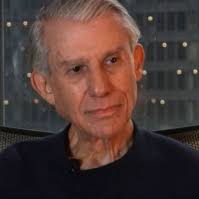This piece was reprinted by OpEd News with permission or license. It may not be reproduced in any form without permission or license from the source.
Today's Japan evolved out of its feudal past once a modern central government was formed. Its 20th century economic model "has been called 'a state-guided market system.' The (government) determines the priorities and commissions the work, then hires private enterprise to carry it out."America's military-industrial complex resembles it, but differs in one major respect. Post-WW II, Japan developed its economy without war. America practically worships it to the detriment of everyone at home and abroad.
At the end of the 1980s, "Japan was regarded as the leading economic and banking power in the world," and thus a challenge to US supremacy as the country that could say no. Its model was so successful that Asian "Tiger" economies copied it - in South Korea, Malaysia, Taiwan, Thailand, and elsewhere. Washington determined to undercut them as early as the 1985 James Baker-engineered Plaza accord and Baker-Miyazawa agreement.
The yen was also affected. Within months, it shot up 40% against the dollar, and overnight Japan became the world's largest banking center. At its twin bubble peaks, Tokyo real estate (in dollars) exceeded all of America's and its stock market represented 42% of world valuations - but not for long.
In 1990, Japan proposed financing former Soviet republics on its model and drew strong US opposition for two reasons. It might exclude US companies, and it would rely on the successful model that fueled Japanese and Asian Tiger growth. It had to be stopped and was.
Pressure was applied with threats of drastic US troop cuts that might endanger Japan's security. The scheme was drop your economic plans or defend yourself. At the same time, the country's twin bubbles imploded, and within months its Nikkei index lost $5 trillion in value, the result of predatory Wall Street short selling intervention. It left Japan severely hurt and no longer a challenge to America.
Confronting Asia's Tiger economies came next. In a Century of War, F. William Engdahl explained:
These economies "were a major embarrassment to the IMF and free-market model. Their very success in blending private enterprise with a strong state economic role" threatened IMF exploitation. "So long as the Tigers appeared to succeed with a model based on a strong state role, the former communist states and others could argue against taking the extreme IMF course. In east Asia during the 1980s, economic growth rates of 7 - 8 per cent per year, rising social security, universal education and a high worker productivity (free from debt) were all backed by state guidance and planning under market-based rules."
In 1993, Washington demanded changes - deregulate, open financial markets, and allow free foreign capital flows. Easing followed along with trouble. From 1994 - 1997, hot money flooded in and created speculative real estate, stock, and other asset bubbles ripe for imploding.
Hedge fund predators like George Soros took full advantage, attacking the weakest regional economy and its currency - Thailand and its baht. The aim: forced devaluation, and it worked. Thailand floated its currency and needed first-time ever IMF help.
Next came the Philippines, Indonesia, and South Korea with much the same result and fallout. Prosperous Asian Tigers were forced into IMF debt bondage as their populations sank into economic chaos and mass poverty, the result of a liquidity crisis severe enough to plunge the region into depression. Within months, over $100 billion shifted to private hands, and within a year $600 billion in stock market valuations were lost.
East Asia was effectively looted. Real earnings plummeted. Unemployment soared with the International Labor Organization estimating around 24 million lost jobs along with the region's remarkable miracle - its prosperous middle class. People literally were thrown overboard - small farmers and business owners, unions, and millions of ordinary people made human wreckage, the result of Wall Street-designed predation, the same scheme wrecking havoc today on a global scale.
China Awakens and Prospers
Under Deng Xiaoping, China changed from a centrally-planned economy to its own market-based model under government-owned banks able to issue credit for domestic development. Until the global economic crisis emerged, it grew impressively at double-digit rates.
Key is its banking system, its government-issued currency, and a system of state-owned banks. Henry CK Liu distinguishes between "national" and "central" banks - the former serves the national and public interest; the latter, private international finance at the expense of the nation and people.
(Note: You can view every article as one long page if you sign up as an Advocate Member, or higher).





